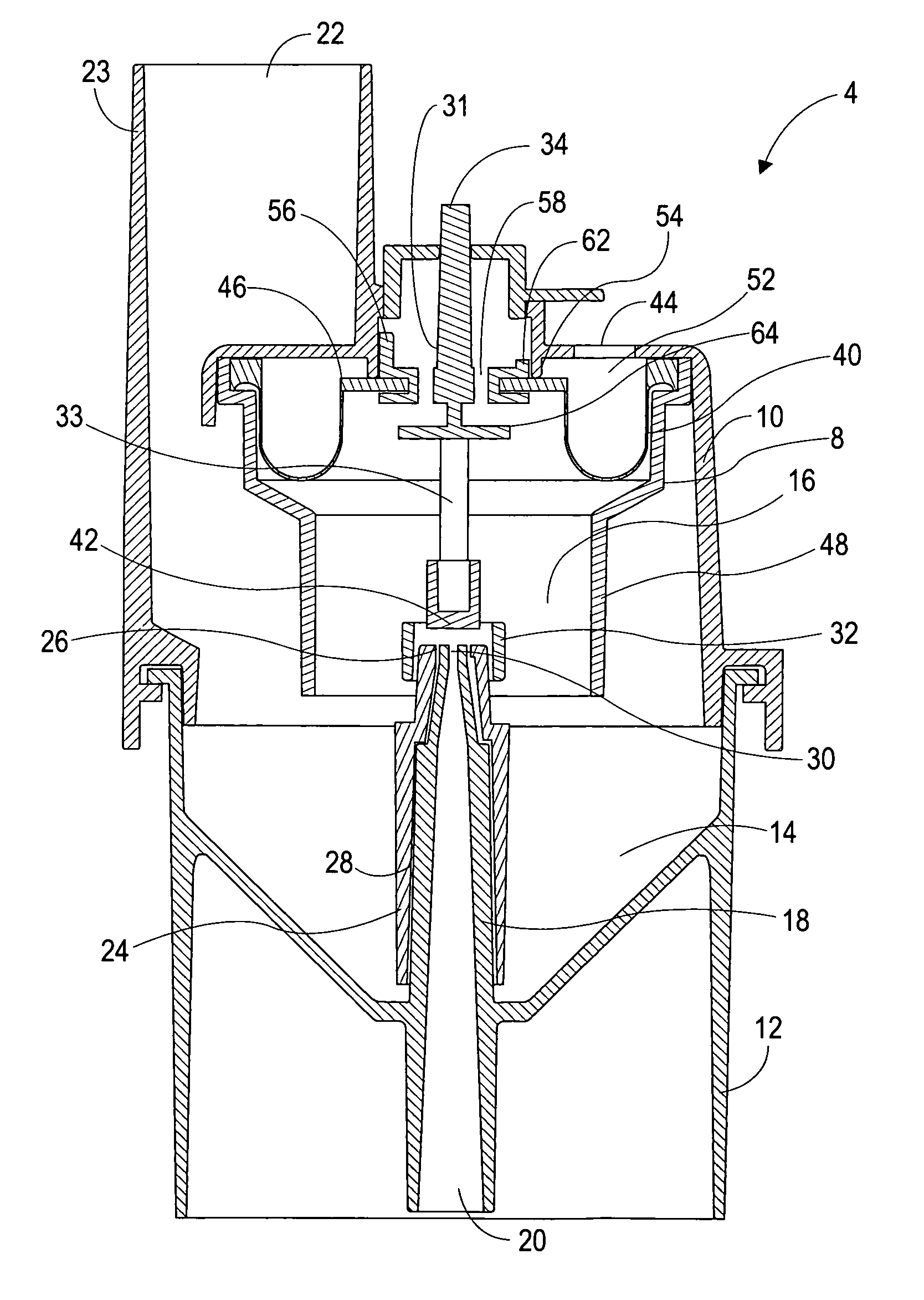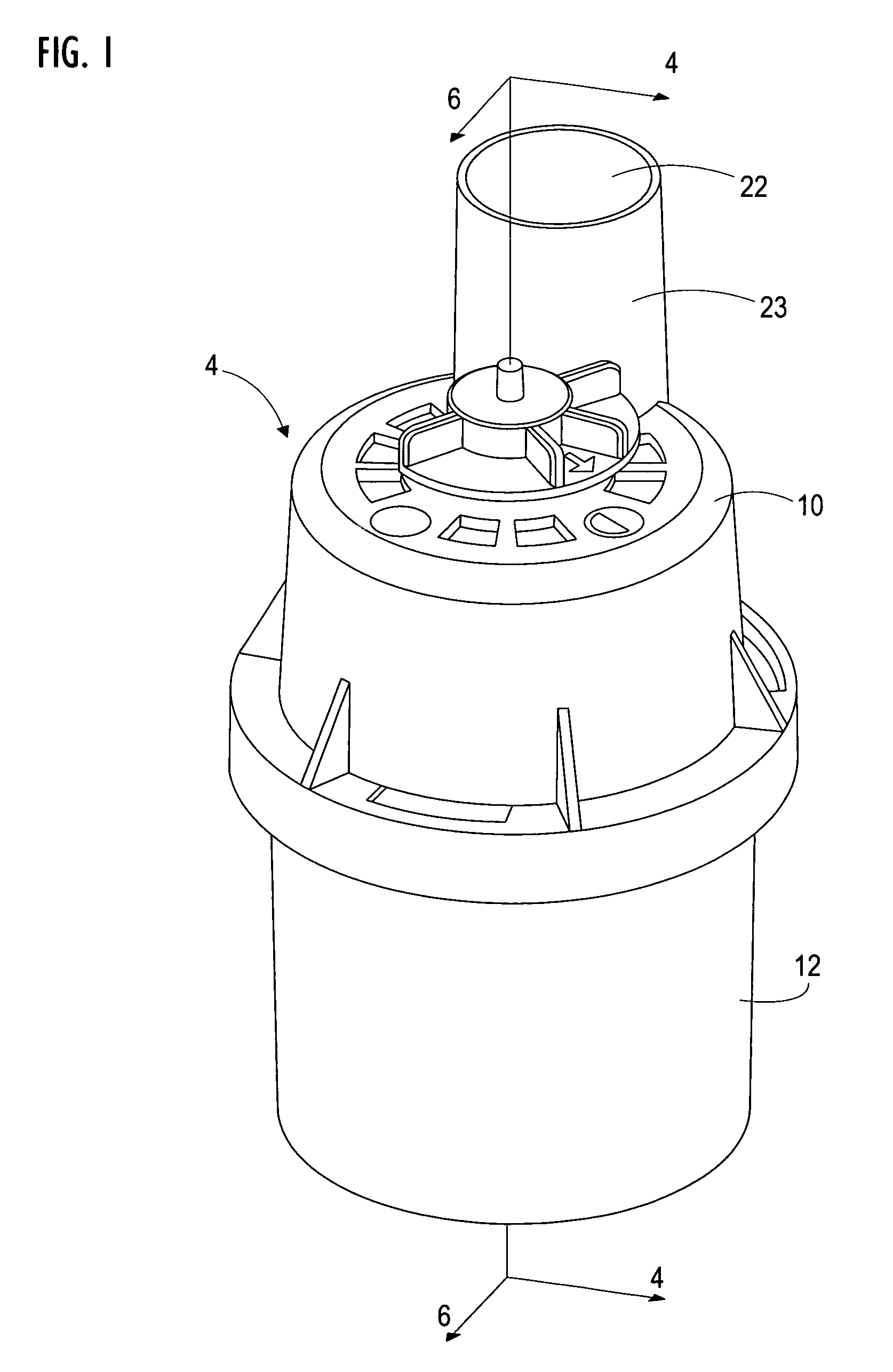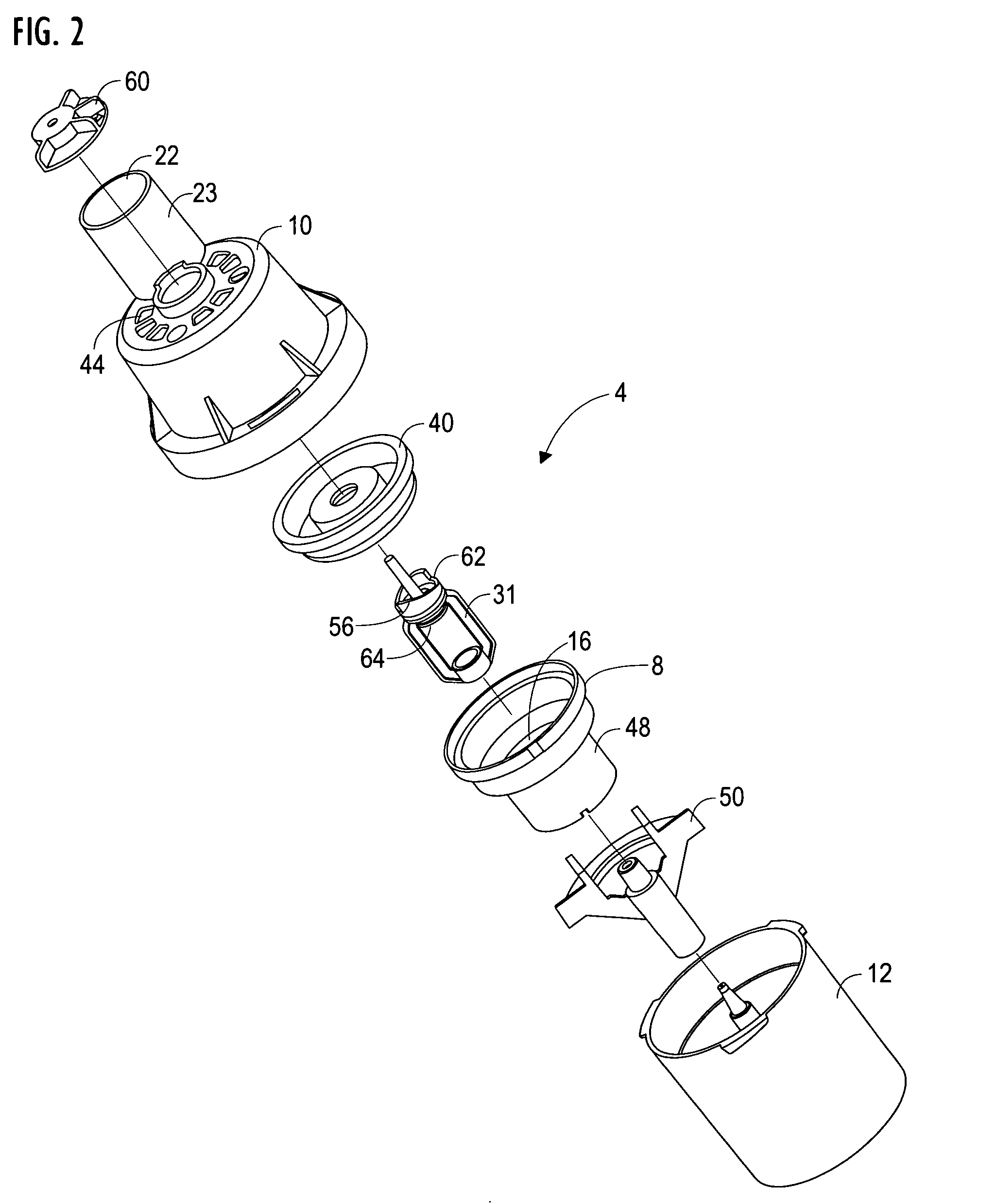Inhalation actuated nebulizer with impingement shield
a technology of inhalation actuation and nebulizer, which is applied in the direction of liquid spraying apparatus, spray nozzle, inhalator, etc., to achieve the effect of less mass accumulation, little drying, and little or no residual build-up
- Summary
- Abstract
- Description
- Claims
- Application Information
AI Technical Summary
Benefits of technology
Problems solved by technology
Method used
Image
Examples
example
[0051]A first embodiment nebulizer device in accordance with the present invention was fabricated and tested.
[0052]Device Dimensions:
[0053]
Nebulizer Unit height:3.75 inchesNebulizer Unit width / diameter:1.88 inchesShield Assembly Travel Distance:0.17 inchesInhalation port dimensions: 22 mm ISO ID “RespiratoryConduction Mouthpiece”Liquid reservoir maximum volume fill:6.0 millilitersAerosol Outlet Port Diameter:0.90 inches
[0054]In practice with the above example of a preferred embodiment, nebulizer unit 4 is supplied gas to inlet port 20 at a pressure of at least 8 psig, and more preferably at least 13 psig, at a flow rate of between 1 and 15 liters of gas per minute, with the range of 5 to 12 liters per minute inclusively being preferred and the range of 8 to 11 liters per minute inclusively being most preferred. The gas issues through a jet orifice having a diameter in the range of 0.011 to 0.030 inches, and more preferably in the range of 0.019 to 0.026 inches. The ratio of the cros...
PUM
 Login to View More
Login to View More Abstract
Description
Claims
Application Information
 Login to View More
Login to View More - R&D
- Intellectual Property
- Life Sciences
- Materials
- Tech Scout
- Unparalleled Data Quality
- Higher Quality Content
- 60% Fewer Hallucinations
Browse by: Latest US Patents, China's latest patents, Technical Efficacy Thesaurus, Application Domain, Technology Topic, Popular Technical Reports.
© 2025 PatSnap. All rights reserved.Legal|Privacy policy|Modern Slavery Act Transparency Statement|Sitemap|About US| Contact US: help@patsnap.com



